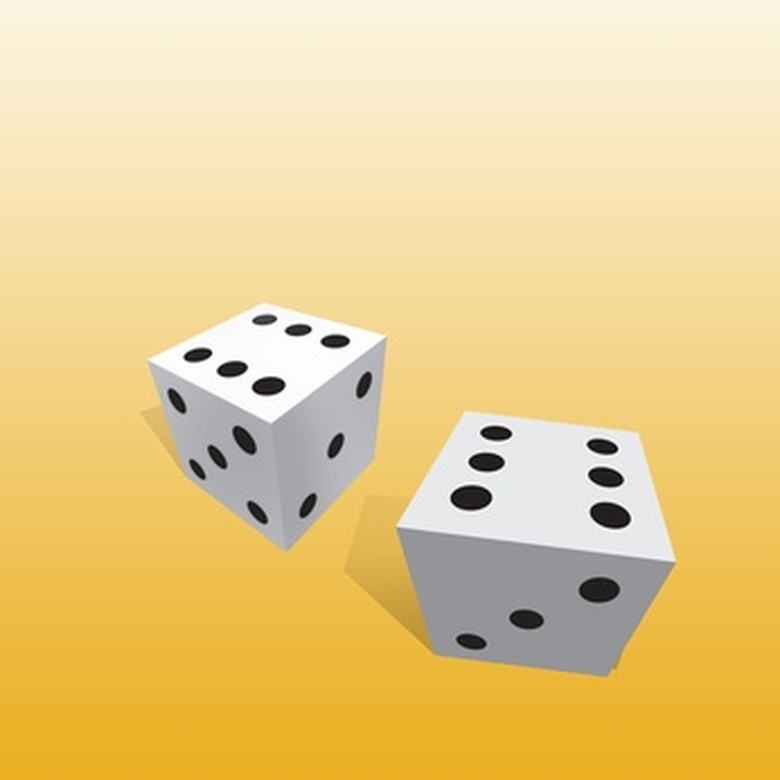Probabilities represent the chances that different events will occur. For example, if you were rolling a single six-sided die, you would have the same probability of rolling a one as rolling any other number because each number will come up one out of six times. However, not all scenarios have each outcome equally weighted. For example, if you add a second die to the mix, the odds of the dice adding up to two are significantly less than adding up to seven. This is because there is only one die combination (1,1) that results in two, while there are numerous die combinations–such as (3,4), (4,3), (2,5) and (5,2)–that results in seven.
Step 1
Determine the total number of possible outcomes for the scenario. For example, with rolling two dice, there are 36 possible outcomes because there are six outcomes for each die so you would multiply six times six.
Step 2
Determine how many ways the desired outcome can occur. For example, if you are playing a board game and will win if you roll an eight, you would need to determine how many ways an eight could be rolled, which is five: (2,6), (3,5), (4,4), (5,3) and (6,2).
Step 3
Divide the number of ways to achieve the desired outcome by the number of total possible outcomes to calculate the weighted probability. To finish the example, you would divide five by 36 to find the probability to be 0.1389, or 13.89 percent.

